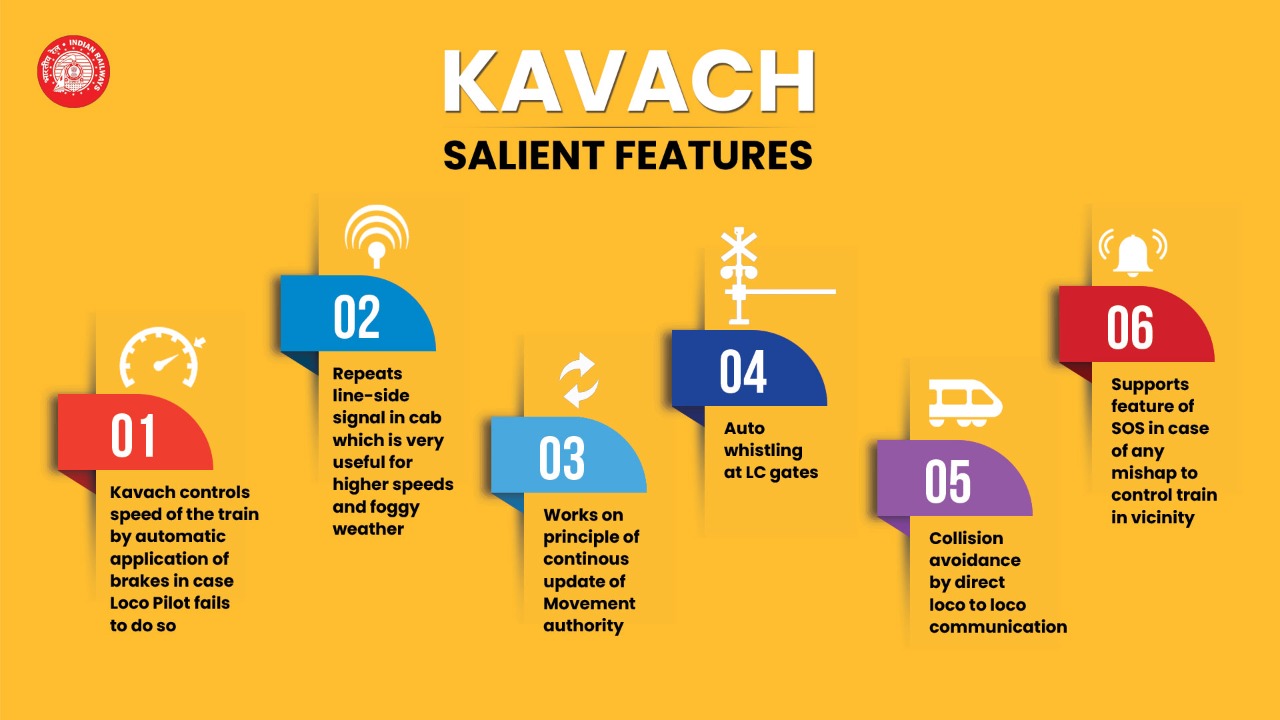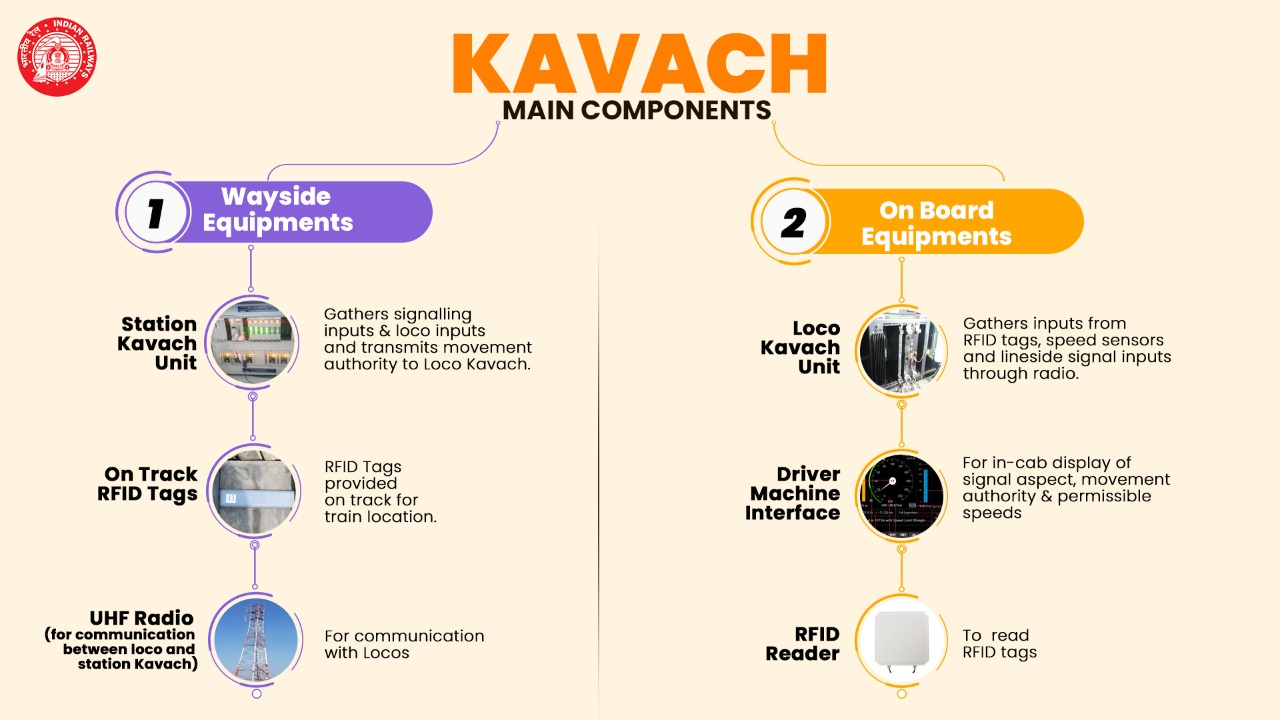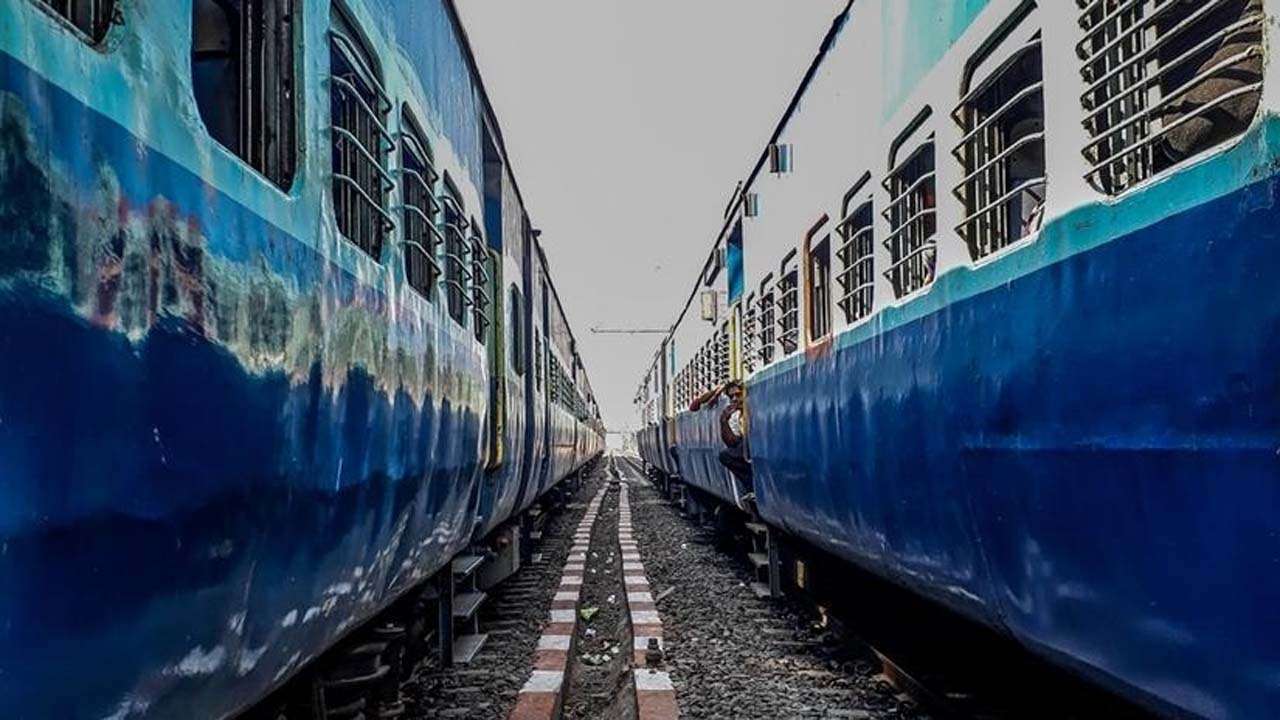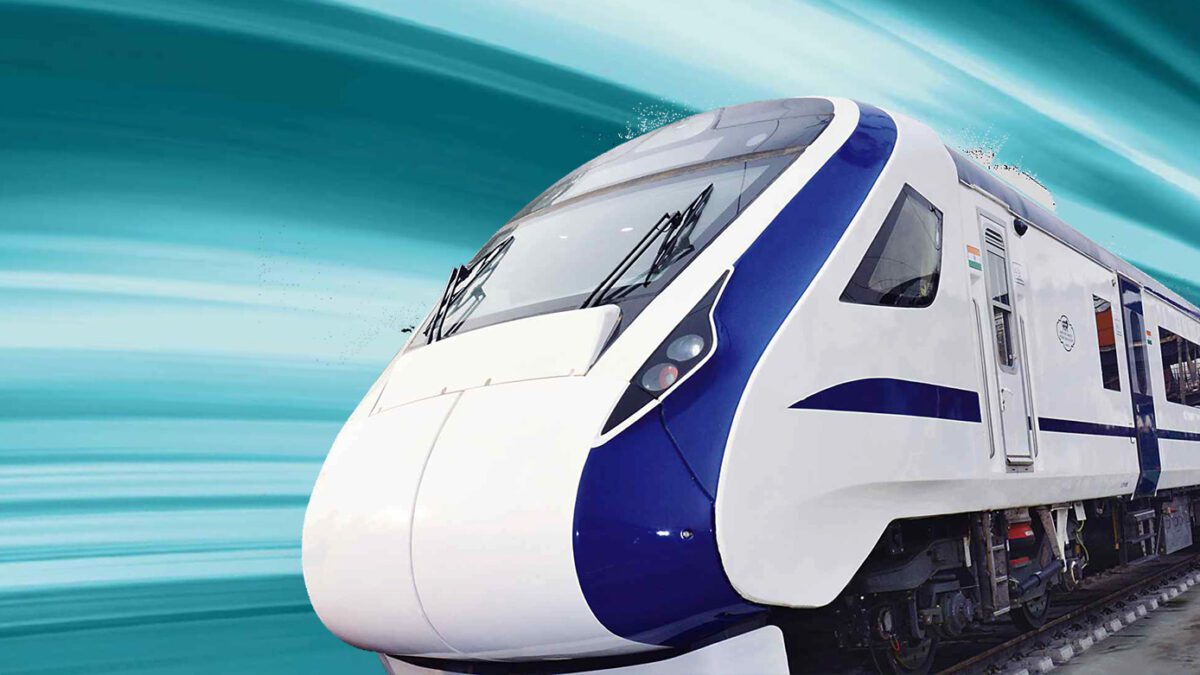According to the budget projections, Kavach, an indigenously designed automatic train protection system that was shown on the South Central Railway on Friday, is scheduled for aggressive implementation on 2,000 km in 2022-23. According to the budget projections, Kavach, an indigenously designed automatic train protection system that was shown on the South Central Railway on Friday, is scheduled for aggressive implementation on 2,000 km in 2022-23. According to the budget projections, Kavach, an indigenously designed automatic train protection system that was shown on the South Central Railway on Friday, is scheduled for aggressive implementation on 2,000 km in 2022-23.
Table of Contents
ToggleWhat exactly is Kavach?
It is India’s own autonomous protection system, which has been under development since 2012 under the name Train Collision Avoidance System (TCAS) and has now been renamed Kavach, which means “armour.”
भारत में बना – भारत का कवच।#BharatKaKavach pic.twitter.com/gGQRfFKNCM
— Ashwini Vaishnaw (मोदी का परिवार) (@AshwiniVaishnaw) March 4, 2022
Simply put, it is a system of electronic devices and Radio Frequency Identification devices installed in locomotives, signalling systems, and railroad tracks that communicate with one another using ultra high radio frequencies to control train brakes and alert drivers, all based on logic programmed into them. One of its advantages is that it may send out triggers when a loco pilot jumps a signal, known as Signal Passed at Danger (SPAD), which is a serious safety violation in railway operations and the cause of mishaps like collisions.The gadgets also continually broadcast signals to the locomotive, which is beneficial to loco pilots in limited visibility, particularly during severe fog.

TCAS, also known as Kavach, combines critical aspects from existing, well-proven systems such as the European Train Protection and Warning System and the indigenous Anti Collision Device. In the future, it will include capabilities from the high-tech European Train Control System Level-2. The current version of Kavach corresponds to the Safety Integrity Degree 4 standard, which is the maximum level of safety and dependability.
So, what’s new?
India now aims to market Kavach as an exportable system, a less expensive alternative to the European systems that are popular across the world. While Kavach now employs Ultra High Frequency (UHF), work is underway to make it compatible with 4G Long Term Evolution (LTE) technology and to commercialise the device globally. Work is underway to make the system interoperable with other systems already in use throughout the world. The system is being developed by the Lucknow-based Research Designs and Standards Organisation (RDSO) in collaboration with commercial manufacturers. India wants more private companies to participate in the research and manufacture of subseauents.

It may be the world’s cheapest Automatic Train Protection System once deployed, with a rollout cost of about Rs 30 lakh to 50 lakh per kilometre, almost a fourth of the cost of comparable systems internationally.
The Kavach system will be able to recalibrate based on temporary speed limitations en route in the next phase, something it now lacks.
Read – Digital Rupee- Indian answer to crypto?
How far has the deployment progressed?


Kavach has been used in the South Central Railway’s current construction for around 1,098 kilometres and 65 locomotives. It will be deployed on 3000 kilometres of the Delhi-Mumbai and Delhi-Howrah lines in the future, when the tracks and systems will be modernised to allow for a high speed of 160 kilometres per hour.
Kavach is now being implemented on 1200 km of South Central Railway, on the Bidar-Parli Vaiinath-Parbhani and Manmad-Parbhani-Nanded, Secunderabad-Gadwal-Dhone-Guntakal sections, in addition to a 250-kilometer trial section.
Furthermore, it has sanctioned plans for approximately 34,000 kilometres of the Golden Quadrilateral’s High Density Network (HDN) and Highly Utilized Network (HUN). Prime Minister Narendra Modi had rejected down the Railways’ ambitious plan to carry out the ETCS-Level 2 system across its network four years ago, instead directing the transporter to explore for indigenous, less expensive options for future upgrades.

